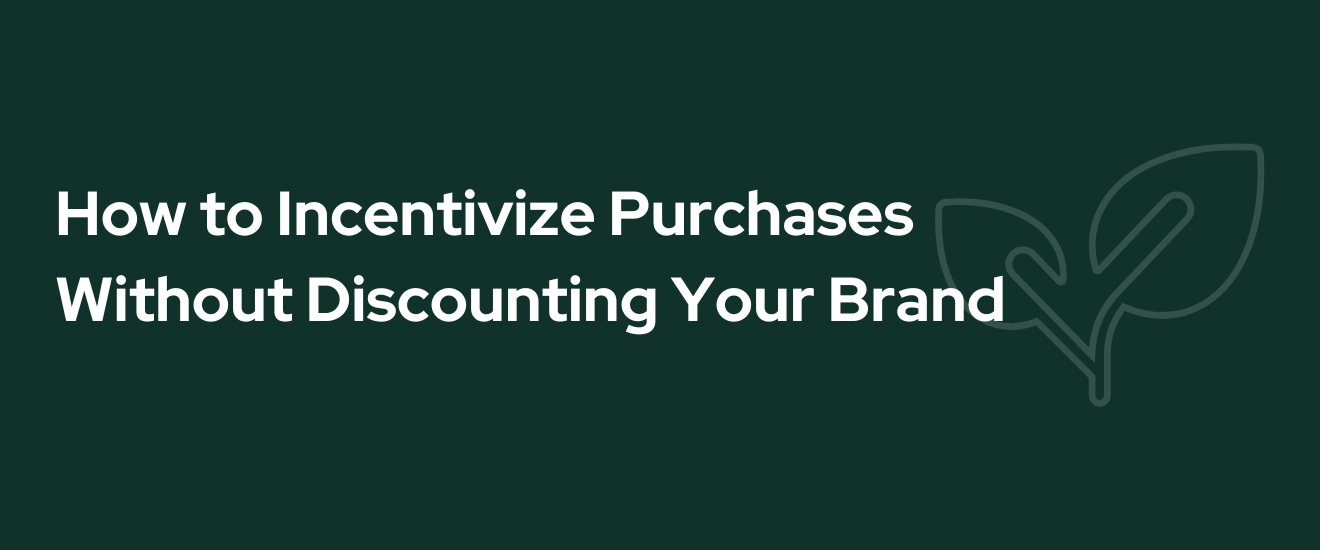How to Incentivize Purchases Without Discounting Your Brand
Adding value without lowering your price is possible. Here's how to strike the balance for your brand.
Offering discounts is a common tactic for driving sales, but it can reduce perceived value and train customers to wait for the next deal.
For mission-driven brands, there’s a better way.
Incentivizing purchases through environmental impact adds value to the purchase without lowering the price — and helps turn one-time customers into long-term supporters.
The Problem With Over-Discounting
Discounting works in the short term, but over time it can hurt your brand.
Customers may begin to see the full price as inflated or become less likely to purchase without a sale. According to a 2023 study by Shopify, brands that rely too heavily on discounts often face lower retention rates and thinner margins.
Purpose-driven brands especially need to protect their long-term value. If you’ve built a reputation for quality and mission, deep discounts can undercut that message.
Impact Incentives as a Value-Add
Instead of lowering prices, many brands are offering impact-based incentives.
For example, “Leave a review and we’ll plant a tree,” or “Every purchase this week helps clean two pounds of plastic from the ocean.”
These messages still create urgency and drive action, but they do so in a way that aligns with your mission.
Ecodrive supports this strategy by letting brands assign verified impact to reviews, newsletter sign-ups, product purchases, and more.
This allows you to run limited-time campaigns that feel rewarding without eroding price integrity.
Building Loyalty Through Impact-Driven Rewards
Impact can also be used as a reward mechanism.
Instead of offering free products or discounts for referrals, you might offer to plant additional trees or fund a clean water project on the customer’s behalf. This not only aligns with your values but also helps customers feel proud to participate.
According to a survey by Cone Communications, 89% of U.S. consumers said they would switch brands to one associated with a good cause, assuming price and quality were equal.
This shows that environmental action can be just as motivating as traditional loyalty rewards.
Creating Urgency Around Collective Goals
Another option is to frame impact incentives around shared goals.
For instance, “Help us reach 10,000 trees planted by the end of the month” creates a deadline-driven incentive while keeping the message value-driven.
This kind of collective campaign builds community and gives your marketing team a strong narrative to build around.
It also allows you to revisit and reframe incentives regularly without falling into the trap of perpetual discounting. Each campaign has a clear purpose and a fresh story to tell.












